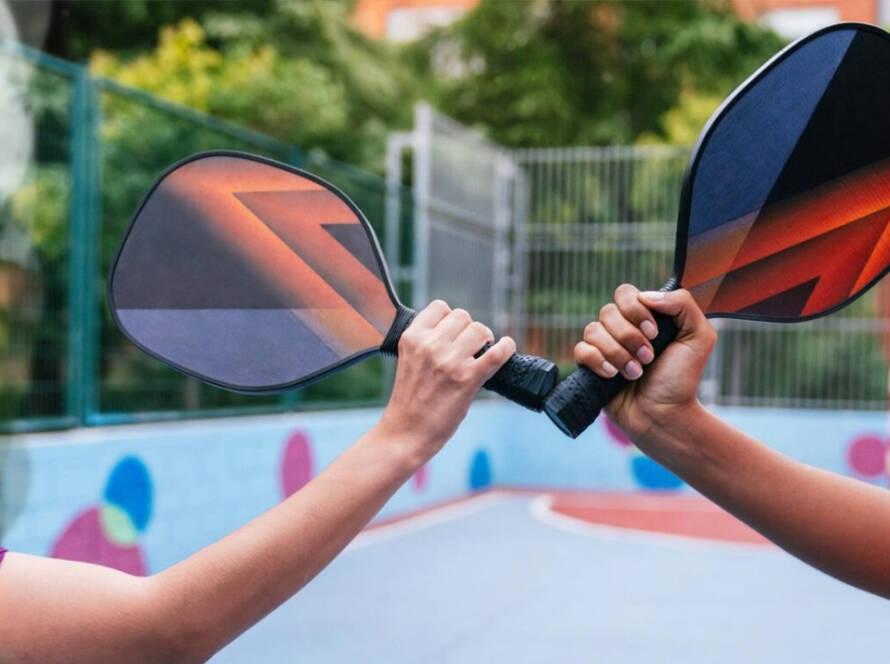Pickleball is changing the face of Indian sport. Across cities and towns, players gather on rooftops, gym floors, and local courts, rallying with paddles and perforated balls. This fast, inclusive game blends the skill of tennis, the agility of badminton, and the simplicity of table tennis. In only a few years, the sport has evolved from a niche curiosity to a nationwide activity connecting generations and inspiring new communities.
How India Discovered Pickleball
The rise of pickleball in India began quietly in Mumbai and Pune around 2017 when fitness enthusiasts introduced the game to neighborhood clubs after seeing it abroad. What made it catch on was its simplicity. The court is smaller than tennis, equipment is affordable, and the learning curve is short.
A 20 × 44 foot court can be built on existing badminton or futsal surfaces. Setting one up costs roughly ₹3–5 lakhs including flooring, nets, and paddles, which makes it ideal for housing societies, schools, and wellness centers.
By 2023, India had about 700 active courts and more than 60,000 players according to community data. Parks, clubs, and corporate spaces have turned to this paddle sport as an easy way to mix fun and fitness.
The Expanding Ecosystem in India
The game has grown into a structured ecosystem with certified coaches, leagues, and academies across Delhi, Hyderabad, Bengaluru, and Pune. Clubs conduct weekend sessions, and a calendar of tournaments now keeps players engaged year-round.
Events such as the Pickleball Premier League (PPL), World Pickleball League (WPBL), and PWR League showcase competitive play and attract sponsorships from national brands. Prize money, endorsements, and live streams have brought professional polish to what was once a community sport.
Athletes from badminton and tennis are shifting careers to this fast-growing paddle sport. For many, the goal is to represent India at international championships and bring recognition to a homegrown movement.
India’s Global Standing
Worldwide, the game now has over 50 million participants across 70 countries. India ranks among the top five nations in participation and facility growth.
Indian athletes have started competing internationally at the Asian Pickleball Open and Thailand Open. Several players from Maharashtra and Telangana have earned medals, strengthening India’s position on the world stage.
With a youthful population, India’s environment favors this sport. It fits urban lifestyles, encourages family participation, and offers an accessible entry point for those seeking active recreation.
Governance and the Roadblocks Ahead
Despite the success story, governance remains fragmented. Multiple associations, including the All India Pickleball Association (AIPA) and the Pickleball Federation of India (PFI), operate separately. The overlap has created uncertainty in rankings and player representation.
The Ministry of Youth Affairs and Sports is reviewing recognition of an official body. A unified structure will be essential for standardized coaching, transparent selection, and compliance with global regulations. Some states are already developing certification programs and consistent rulebooks to streamline competition.
The Olympic Path
Global federations such as the World Pickleball Federation (WPF) and the International Federation of Pickleball (IFP) are campaigning for inclusion in the 2032 Brisbane Olympics. To qualify, the sport must be played in at least 75 countries and on multiple continents, a target expected to be met soon.
If the Olympic bid succeeds, India could become one of the leading Asian contenders thanks to its growing player base and improving training infrastructure. The sport already aligns with Olympic values of accessibility, gender balance, and mass participation.
Technology platforms like Rackonnect REPPP are contributing by helping players find tournaments, track performance, and connect with accredited coaches, creating a digital pathway for national development.
Economic Growth and Market Potential
The Indian market for the sport may exceed ₹1,000 crore by 2026 through court construction, coaching centers, and franchise events. Entrepreneurs and investors are exploring indoor arenas, analytics tools, and smart equipment to capitalize on rising demand.
Real-estate developers and fitness chains are adding dedicated courts to their projects, turning the game into a modern lifestyle feature. Domestic manufacturers now supply affordable paddles and accessories suited to Indian conditions, building a self-sustaining supply chain.
As participation expands, sponsorships and brand collaborations are growing rapidly, positioning this emerging sport as one of India’s most promising recreation sectors.
Community and Cultural Shift
Beyond numbers, the game has become a social experience. Families, coworkers, and neighbors gather on weekends to play together. Corporate offices and universities are organizing inter-team competitions to boost wellness and team spirit.
The sport promotes inclusivity and balance. Seniors and youth often share the same court, while influencers and athletes highlight it across media. Urban culture is embracing it as a symbol of active living and togetherness, showing that India’s sporting identity is expanding beyond its traditional favorites.




